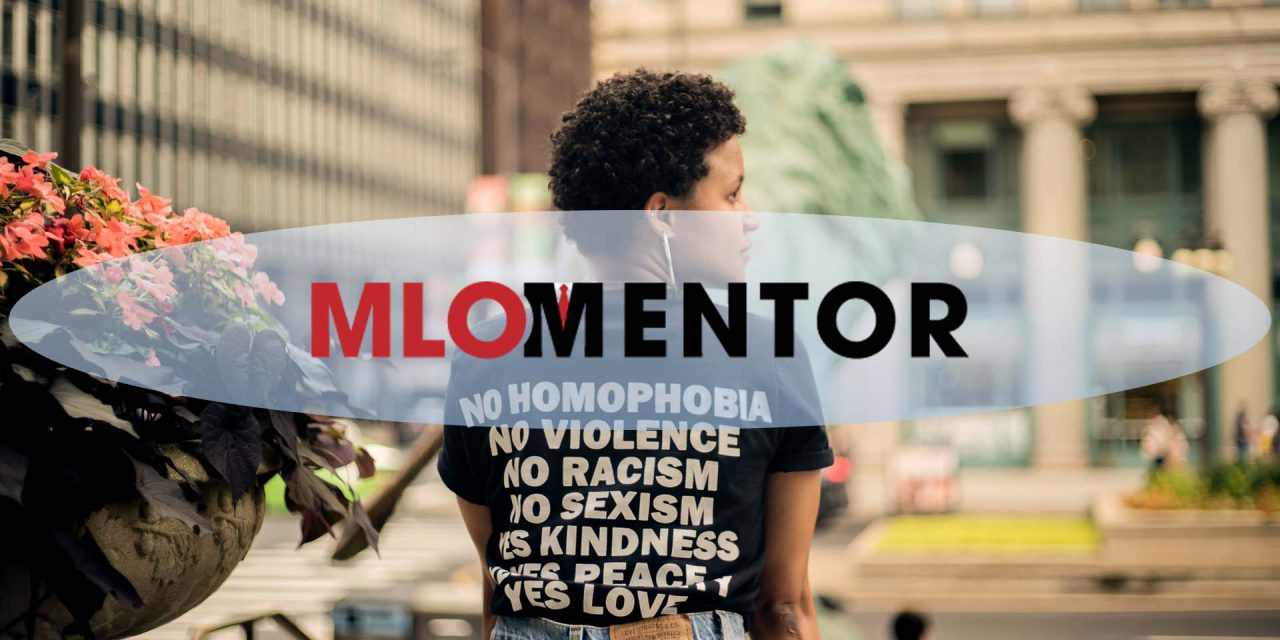MLO Mentor is an ongoing series covering compliance best practices for mortgage loan originators (MLOs). This article discusses the Equal Credit Opportunity Act (ECOA). Enroll in firsttuesday’s 8-Hour NMLS CE to renew your California MLO license and learn more about fraud and abuse prevention in your practice.
ECOA Purpose and Coverage
The Equal Credit Opportunity Act (ECOA) was enacted in 1974 to prohibit discrimination in lending based on race, color, religion, national origin, sex, marital status or age (provided an individual is of legal age and capacity to contract). Originally, the ECOA was under the watch of the Federal Reserve Board. Supervision and enforcement transferred to the Consumer Financial Protection Bureau (CFPB) on July 21, 2011. [15 United States Code §1691(a)(1); 15 USC §1691b]
However, the Federal Trade Commission (FTC) is ultimately responsible for ECOA enforcement and education, regarding most non-bank financial service providers. The FTC also actively works to educate consumers, promote competition, and stop deceptive and unfair business practices and scams. [Press Release: FTC Staff Provides Annual Letter to CFPB on 2020 Equal Credit Opportunity Act Activities (Feb 3, 2021)]
The protections of the ECOA apply to all credit — commercial, personal, loans, credit cards, mortgages, etc. — and all lenders. If a transaction provides for the deferral of the payment of a debt, the ECOA controls. For this discussion, we will focus on the issues that impact mortgage lending. [12 CFR §1002.1(a)-1]
The anti-discrimination rules apply to lenders, loan brokers and others who make, arrange or purchase loans. [15 USC §1691a(e)]
Informing consumers about their loan choices is an important shield against discrimination. For any borrowers pursuing FHA loans, an Informed Consumer Choice Disclosure Notice must be provided. This notice must be revised at least annually in order to ensure borrowers receive accurate information [24 CFR § Part 203.10]
Editor’s note — For simplicity in discussing the discrimination laws, we’ll only refer to “lenders.” However, loan brokers are considered “referrers to creditors” since they do not make credit decisions. As “referrers”, they are subject only to the general prohibition against discriminatory lending practices, and not to disclosure requirements. Only lenders (such as banks or direct lenders) are subject to the disclosure requirements under the ECOA. [Official Interpretations of 12 CFR §1002.2(l)-2]
In pursuing its goals, the ECOA provides three different protections. It:
- prohibits discriminatory lending [15 USC §1691(a)];
- requires lenders to provide notices and reasons for denial of credit [15 USC §1691(d)]; and
- guarantees home loan applicants a copy of their appraisal reports. [15 USC §1691(e)]
Prohibitions against discriminatory lending
Discriminatory practices take many forms, including:
- treating minority loan applicants less favorably than non-minority applicants;
- placing additional burdens on minority applicants;
- requiring a spouse’s signature on a loan application when an applicant qualifies for a loan individually [Anderson United Finance Company (1982) 666 F2d 1274];
- discouraging loan applicants based on their race, color, sex or other prohibited basis [12 CFR §1002.4(b)]; and
- using the marital status of loan applicants as a measure of their creditworthiness. [12 CFR §1002.5(d)]
A lender cannot treat co-applicants differently based on the existence, absence or likelihood of a married relationship. [12 CFR §1002.6(b)(8)]
A lender may not make any inquiries into whether a loan applicant’s income is derived from alimony or child support. [12 CFR §1002.5(d)(2)]
A lender may not inquire whether the applicant intends to bear children. A lender cannot base credit decisions on the likelihood of diminished income due to childrearing costs. [12 CFR §§1002.5(d)(3), 1002.6(b)(3)]
Further, to deny a loan based on an applicant’s receipt of income from a public assistance program, such as welfare or social security, is unlawful discrimination. [15 USC §1691(a)(2)]
However, discrimination is rarely overt. Most lenders are not transparent enough for the consumer to see the discrimination. Most often, discrimination takes the form of a lender denying a loan to a minority borrower without a valid reason or applying different standards to minority and non-minority borrowers.
Additionally, disparate treatment on a prohibited basis is illegal whether or not it results in a conscious intent to discriminate. Treating applicants differently on a prohibited basis is unlawful if the creditor lacks a legitimate nondiscriminatory reason for its action, or if the asserted reason is found to be a pretext for discrimination. [Official Interpretations of 12 CFR §1002.4(a)-1]
The following scenarios are examples of unlawful disparate treatment:
- a lender provides information only on high-cost or similar products to minority applicants, but provides information on a variety of mortgage products to similarly situated non-minority applicants;
- a lender provides more comprehensive information to men than to similarly situated women;
- a lender requires a minority applicant to provide greater documentation to obtain a loan than a similarly situated non-minority applicant; or
- a lender waives or relaxes credit standards for a non-minority applicant but not for a similarly situated minority applicant. [Official Interpretations of 12 CFR §1002.4(a)-2]
Different treatment is discrimination
Lenders must be careful not to provide more assistance to non-minority borrowers than to minority borrowers when preparing applications and working out problems which arise. The different treatment of minority and non-minority applicants is another form of unlawful discrimination.
For example, an African-American couple applies for a loan to be insured by the Federal Housing Administration (FHA), which will fund the purchase of a residence. The home the couple seeks to purchase is 75 miles from their place of work. The couple intends to occupy the home as their principal residence and commute to work.
The lender suspects the couple wants to purchase the home as an investment, and not to occupy it themselves. Since the type of FHA insurance sought may only be used to purchase homes which the buyer will occupy, the lender denies the loan application.
The lender does not discuss with the couple whether they intend to occupy the home. Also, the lender never suggests the couple can apply for a non-FHA loan. Due to a loan contingency, the couple loses their right to buy the home and incurs expenses in the process.
The couple seeks to recover their money losses from the lender under the ECOA, claiming the lender’s denial of their loan application was due to unlawful discrimination.
The lender claims the denial of the loan application was proper since it believed the couple did not intend to occupy the home, and thus did not qualify for an FHA-insured loan.
Lenders must provide the same level of assistance to non-minority borrowers as minority borrowers. Thus, the lender may not unilaterally decide the couple did not intend to occupy the home without first discussing the couple’s intentions with them. Also, even if the couple did not qualify for an FHA-insured loan, as a matter of professional practice, the lender needed to refer them to other forms of financing.
Thus, the lender discriminated against the African-American couple by denying their loan application without a valid reason. Further, there was a failure to use diligence in assisting the couple to obtain other financing.
Another example of unlawful discrimination
Consider an unmarried couple who applies for a home loan to be evidenced by a note and trust deed signed by both. The couple fills out a loan application stating their separate incomes which, when combined, are sufficient to qualify for the loan.
The lender denies the loan application since the couple is not married and their separate incomes are not sufficient to allow each of them to independently qualify for the loan. The couple is unable to locate another lender before their purchase agreement is cancelled by the seller.
The couple seeks to recover their losses from the lender under the ECOA, claiming the lender has unlawfully discriminated against them based on their marital status.
The lender claims the denial of the loan to the unmarried couple is motivated by a legitimate business consideration. The lender states the couple presents a greater risk of default since the couple’s separate incomes are not sufficient to cover the loan, and unmarried couples are not liable for each other’s debts, as are married couples.
Was the lender’s denial of the couple’s loan unlawful discrimination?
Yes! The lender had no valid reason not to consider the couple’s combined income in determining whether their income was sufficient to qualify for the loan. As both will sign the note, both will be liable for the loan. Thus, the lender’s denial of the couple’s loan application is based on their marital status. This is form of unlawful discrimination. [Markham v. Colonial Mortgage Service Co. Associates, Inc. (1979) 605 F2d 566]
Exceptions to the anti-discrimination rules
A lender may lawfully consider a loan applicant’s age when determining the applicant’s creditworthiness or whether the applicant receives income from a public assistance program, if such an inquiry is for the purpose of determining the amount and likely continuance of income. [15 USC §1691(b)(2)]
Editor’s note — Allowing lenders to consider an applicant’s age or receipt of income from a public assistance program as an exception in determining the applicant’s creditworthiness effectively removes these two factors from the anti-discrimination protection previously discussed. While a lender may not refuse to accept applications or impose different loan terms based on an applicant’s age or receipt of public assistance income, the lender can lawfully deny a loan based on these factors simply by stating the applicant is not creditworthy.
Further, lenders may consider an applicant’s immigration status when considering a loan application. Immigration status is used by the lender to determine whether the applicant is a permanent resident of the United States. [12 CFR §1002.6(b)(7)]
Requesting a spouse’s signature to create a valid lien, passing clear title, waiving rights to property or assigning earnings is not considered discriminatory. [15 USC §1691d(a); 12 CFR §1002.7(d)(4)]
The lender may request information about an applicant’s spouse if:
- the spouse is contractually liable for the account;
- the applicant relies on the spouse’s income to qualify for the loan requested;
- the applicant resides in a community property state or the loan is secured by property located in a community property state; or
- the applicant is relying on alimony, child support or maintenance payments from a spouse to qualify for the loan requested. [12 CFR §1002.5(c)]
A lender may also affirmatively solicit members of a traditionally disadvantaged group to apply for credit. [Official Interpretations of 12 CFR §1002.4(b)-2]
For example, a lender may advertise and tailor advertisements for loan products to a minority community. The lender may not, however, disparately provide information for only high-cost or less favorable loans (e.g., “high-cost” loans) to that community if the lender also provides lower-cost or more favorable loans (e.g., “prime” loans).
MLOs — All this information is of the utmost importance not only to the way you approach your customers, but the integrity of your business. Be sure to always keep it in mind.














